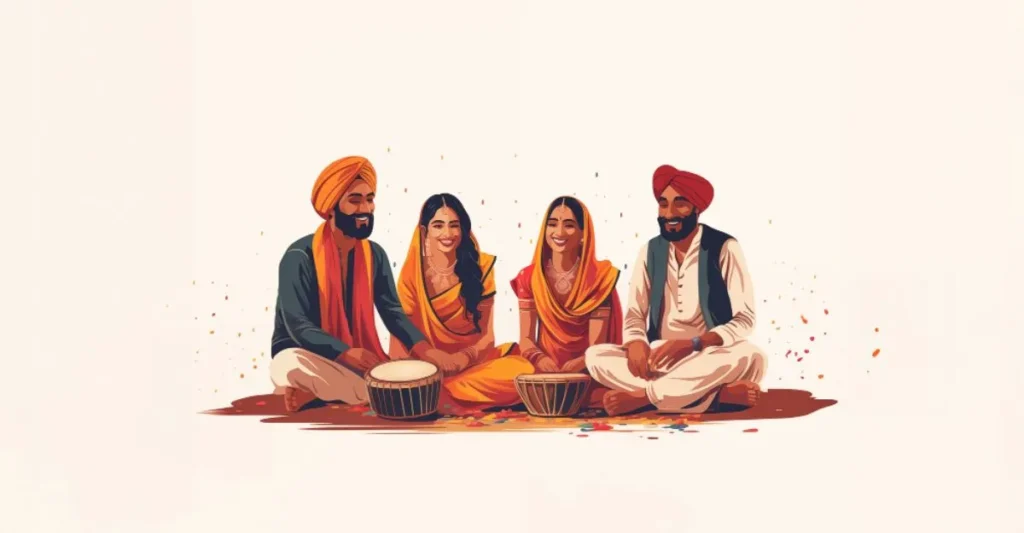Lohri 2024 in Punjab: A vibrant celebration on January 14, marking the harvest’s end. Bonfires, gratitude rituals, and festive traditions unite communities, fostering joy and warmth.
Lohri is a very popular festival in India which is celebrated with great enthusiasm by the Hindu and Sikh communities, especially in Haryana and Punjab. It is also called Lohri or Lal Loi which takes place a day before Makar Sankranti. People come out of their homes. By lighting a big fire outside or in any open place using wood or cow dung cakes, they worship the fire and celebrate Lohri.
As part of the tradition he goes around further offering sesame seeds, jaggery, Gajak, Rewari, and peanuts. This day is also important for the harvesting of crops and the food obtained from the harvest is used to make special offerings to the fire.
Lohri 2024 Date:
In North India, the festival of Lohri is celebrated with great pomp and show. This festival is celebrated a day before Makar Sankranti. It is seen with special enthusiasm in Punjab, Haryana, Himachal Pradesh, and Delhi.
According to the solar part of the lunisolar Vikrami calendar or as per the Hindu solar calendar, Lohri falls in the month of Pausha. This year it will fall on 14 January according to the Gregorian calendar.
Lohri 2024 Significant:

- Gratitude:
- During Lohri, farmers express gratitude to Agni (the fire god) and Surya Devta (the sun god) for a prosperous harvest. The bonfires lit during the celebration are a symbol of this gratitude, acknowledging the pivotal role of these deities in agricultural abundance.
- Fertility:
- The bonfires not only serve as a mark of gratitude but also symbolize the rekindling of life and fertility. As the flames dance and the fire crackles, it is a representation of the energy and vitality needed for the earth to yield bountiful crops in the upcoming season.
- Community:
- Lohri is a communal celebration where people come together to partake in the festivities. Gathering around the bonfire, singing traditional songs, dancing, and sharing meals strengthens social bonds. It fosters a sense of unity and community spirit, as individuals join in the joyous occasion as one.
- Hope:
- The festival marks the end of harsh winters and the onset of spring. This transition is symbolic of hope for a better future. The emergence of spring brings with it the promise of new life, growth, and abundance. Lohri, therefore, becomes a celebration of optimism, as people look forward to the positive changes that the upcoming season may bring.
Lohri 2024 Puja Timmings:
The puja timings for this year’s Lohri festival, as per Drik Panchang, are outlined as follows:
- Tritiya Tithi (Third Lunar Day):
- Up to 07:59 AM, January 14
- Chaturthi Tithi (Fourth Lunar Day):
- Up to 04:59 AM, January 15
- Brahma Muhurta (Auspicious Time in the Early Morning):
- From 05:27 AM to 06:21 AM
- Abhijit Muhurta (Another Auspicious Time):
- From 12:09 PM to 12:51 PM
These timings are significant for those planning to perform Lohri puja, as they indicate specific windows of auspiciousness. Tritiya and Chaturthi Tithis are important lunar phases for rituals, and Brahma Muhurta and Abhijit Muhurta are considered highly auspicious times for performing religious activities.
Lohri 2024 Rituals:
- Door-to-Door Singing:
- Children sing at people’s homes and receive sweets and money.
- Kite Flying:
- Kites are flown, adding joy to Lohri celebrations.
- Lohri Dena – Gift Giving:
- Children get gifts like sugar, grass, peanuts, and maize.
- Bonfire Rituals:
- In the evening, a fire is lit, and items are offered.
- Singing and Dancing:
- People sing and dance around the bonfire.
- Eating Makke ki Roti Sarso Ka Saag:
- Mustard greens and cornbread are enjoyed for dinner.
Conclusion:
Lohri is not just a harvest festival; it embodies gratitude, fertility, community bonding, and hope for a better future. The rituals and celebrations unite people, reflecting the rich cultural heritage and the significance of seasonal transitions. Lohri 2024 promises to be a joyous occasion marked by tradition, spirituality, and communal festivities.
